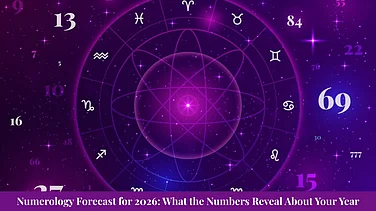In Hindu customs, Mahalaya honours the "pitrs," or ancestors. It is also known as Sarvapitri Amavasya, Pitra Moksha Amavasya, or Pitru Amavasya. According to Amavasyant calendar that is used in South India, it is celebrated on the Amavasya (new moon day) of the month known as "Bhadrapada."
Mahalaya 2024 Date:
Mahalaya Amavasya is the last day of the 15-day Shraddha practices. This year, it will be observed on October 2. It is said to be very auspicious because the shraddha ritual for any dead person can be done on this day, no matter what tithi it is.
Mythology behind Mahalaya Amavasya:
The epic Mahabharata says that Karna was fed gold and jewels when he died and his soul went to heaven. At that moment he didn't understand, so he asked Yama why he was suffering. Yama told Karna that he had given away a lot of money and other things when he was living, but he had never given food to his dead ancestors. He couldn't give Tarpanam to his ancestors because he didn't know who they were until he died. After this, Yama let Karna return to earth for 15 days (Mahalaya Paksha) so that he could feed and water his ancestors to make them happy. So, Karna did the duties for the ancestors and then went to heaven.
History of Mahalaya:
According to legend, Goddess Durga was created by Brahma, Vishnu, and Maheshwara to vanquish the demon ruler Mahishasura. The demon king has gained the blessing that no one, not even gods or goddesses, can destroy him. Goddess Durga had a variety of weapons from her creators to use in her battle with the demon king. Mahalaya essentially signifies the coming of Goddess Durga to Earth. It is said that Goddess Durga is the goddess of absolute power.
According to Hindu mythology, Mahishasura, the demon king, was bestowed with an invincibility against all deities and humans. This blessing gave Mahishasura the strength to confront the Devas, or celestial creatures, which led to their defeat and subsequent banishment from Devlok, the heavenly realm. To escape from Mahishasura's fury and for divine assistance, all of the Devas, under the leadership of Lord Vishnu, prayed to Adi Shakti. It is thought that at this very instant, Goddess Durga's form came together from the divine light that was emanating from the Devas' bodies.
Mahishasura and Goddess Durga fought for ten days. On the tenth day, Mahishasura lost. During the ten days of Durga Puja celebrations, Maa Durga is enthusiastically worshipped as the personification of strength. Believers contend that she comes to Earth to bestow blessings on her people at this time.
What is the Significance of Mahalaya?
Mahalaya Amavasya rituals are carried out to get blessings, well-being, and prosperity. People who do this ritual are blessed by Lord Yama, and their families are safe from harm.
Hindu scriptures state that on the day of "Sarvapitra Moksha Amavasya," a person can practice "tarpan" on behalf of their ancestors if they do not observe the shraddha of their ancestors during the first 15 days or if their death date is unknown. It is said that the ancestors and forefathers visit their home on the day of Mahalaya Amavasya, and if their shraddha rite is not performed on their behalf, they return unhappy.
Astrological science states that any mistakes made by the ancestors will show up as "Pitra Dosh" in the horoscope of their offspring. As a result, bad things happen to them. Having failed to find salvation, these ancestors' souls wander in search of peace.
However, this "Pitru Dosh" can be eliminated and the departed soul can be saved by carrying out the shraddha rituals on Mahalaya Amavasya. In return, the ancestors bestow blessings and lifelong pleasure upon their family. The shraddha ceremonies held on the day of Pitra Moksha Amavasya are regarded as equally pure and serene as those held in Gaya, the holy city famous for conducting these ceremonies.
Rituals during Mahalaya Amavasya:
Tarpan Ceremony:
Tarpan is the most important ritual of Mahalaya. At dawn, people gather on the banks of rivers or any other water bodies to perform the ceremony of Tarpan. Where they offered water, sesame seeds, and flowers to their ancestors. Usually, this ritual is mostly performed by male members of the family, especially those who have lost their parents, to pray for the peace and salvation of the departed souls.
Invocation of Goddess Durga:
Devotees wake up early to listen to the chants and hymns from the "Chandi Path" or "Devi Mahatmyam," which narrates the story of the creation and victory of Goddess Durga over the demon Mahishasura. The "Mahishasura Mardini" broadcast is a significant part of the Mahalaya morning, bringing alive the divine energy and invoking the goddess's arrival on Earth.
Preparations for Durga Puja:
Mahalaya also marks the beginning of Durga Puja preparations. The artisans in Kumartuli, Kolkata's famous idol-making district, give the finishing touches to the clay idols of Goddess Durga. One thing that is very important at this moment is that it is believed that on the occasion of Mahalaya, the eyes of the goddess are painted. This auspicious ritual is known as "Chokkhu Daan," which also signifies the infusion of life into the idol.
Celebrations in the community:
People all over India really enjoy Mahalaya, but West Bengal is where it's most popular. It is done with devotional singing, dance dramas, and cultural programs that depict the story of Goddess Durga and her victory over Mahishasura. People start getting their homes ready for the big Durga Puja events that are coming up.
How is Mahalaya celebrated across India?
The observance of Mahalaya Amavasya varies across different regions of India with its unique customs and traditions.
West Bengal: Known as Mahalaya, it marks the beginning of Durga Puja preparations. People wake up early to listen to the “Mahishasura Mardini” broadcast and visit nearby water bodies for rituals.
Tamil Nadu: Called “Thai Amavasai,” people perform rituals at temples and offer prayers to ancestors at home.
Maharashtra: Devotees observe “Pithori Amavasya,” dedicating the day to Goddess Pithori, the protector of children.
Gujarat: Known as “Dasha Amavas,” it’s associated with the worship of Goddess Dashamaa and the performance of ancestral rituals.
Odisha: People celebrate “Mahalaya Amavasya” by offering prayers to ancestors and preparing for the upcoming Durga Puja festival.





























